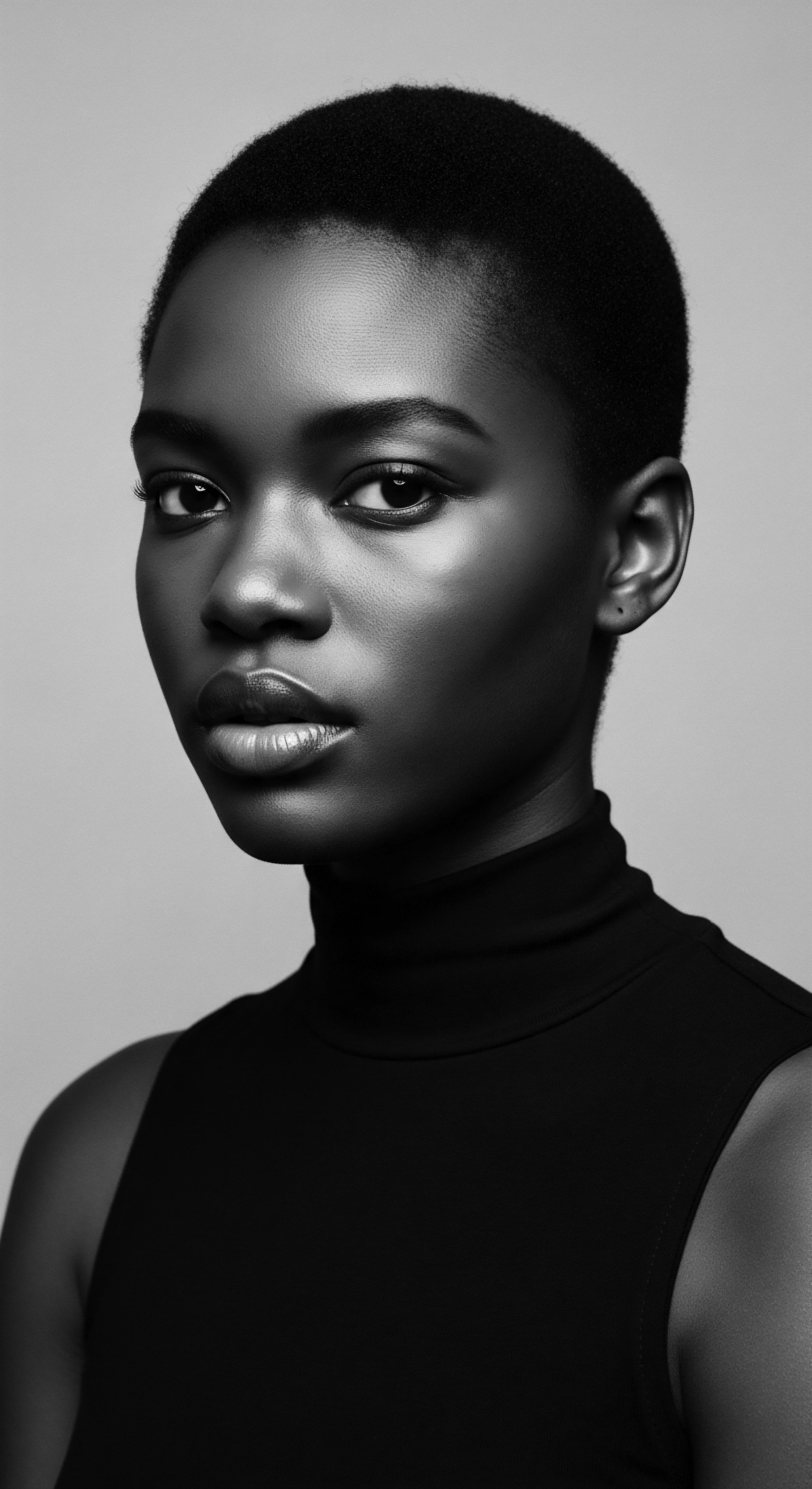
Roots
Consider, if you will, the delicate helix of a single strand of textured hair. Does it not whisper tales of epochs long past, of ancestral hands that braided strength and wisdom into its coils, of journeys across vast oceans and arid lands? To understand the profound dance between socio-political movements and the perception of textured hair, we must first descend to its very core, to the biological genesis and the primal human responses it stirred. Our journey begins not with a decree or a protest banner, but with the very fabric of the strand itself, a testament to deep, enduring heritage.
Hair, in its myriad forms, is more than mere protein. It is a biological archive, each twist and turn holding echoes of human migration, genetic adaptation, and the diverse tapestry of our collective past. For generations, before the advent of oppressive ideologies, hair stood as a marker of identity, status, and spiritual connection within indigenous communities across Africa and beyond.
Its unique morphology—the elliptical follicle, the varied curl patterns—was a source of communal pride and a canvas for artistry. These biological truths, however, became distorted, weaponized even, by forces far removed from their original reverence.
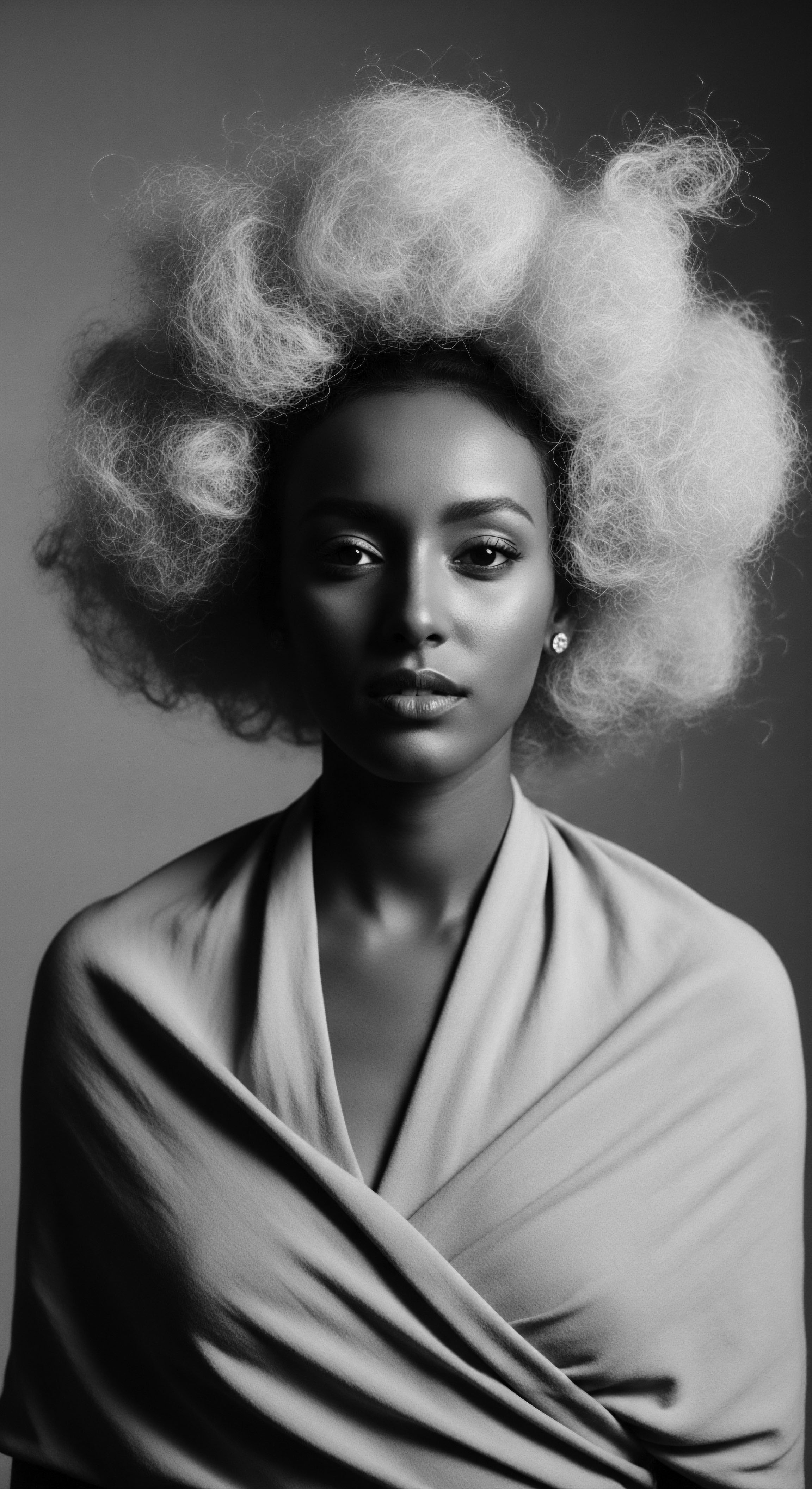
The Architecture of Ancestry
The inherent characteristics of textured hair—its incredible density, its tendency to defy gravity, its unique susceptibility to environmental moisture—are not flaws. They are adaptations, brilliant expressions of human biology honed over millennia in diverse climates. When we speak of hair anatomy, we speak not only of the medulla, cortex, and cuticle, but also of the cultural meanings layered upon these biological structures.
Early colonial narratives, steeped in pseudo-scientific racism, sought to categorize and diminish this inherent diversity, applying hierarchical classifications that positioned textured hair at the lowest rung. Such pronouncements, devoid of genuine scientific inquiry, were designed to justify subjugation and strip individuals of their fundamental dignity.
The Eugenics Movement of the late 19th and early 20th centuries, for example, directly contributed to the pathologization of textured hair, linking it to perceived racial inferiority. This pseudo-scientific framework, often disseminated through academic and medical journals, provided a ‘scientific’ basis for discrimination, reinforcing the notion that straight hair was the ideal and textured hair was a deviation from the norm (Roberts, 2011). These insidious classifications found their way into mainstream consciousness, shaping public perception and leading to generations of self-rejection and the arduous pursuit of hair alteration.
The very coils and kinks of textured hair, once symbols of ancestral strength, became battlegrounds for identity in the wake of oppressive socio-political currents.

Naming the Strands of Time
The lexicon we use to describe textured hair often carries the weight of its complex past. Historically, terms like ‘kinky’ or ‘nappy,’ once neutral descriptors within some communities, were weaponized by colonial powers to derogatorily label and demean Black hair, rendering it ‘unruly’ or ‘bad.’ This linguistic manipulation was a direct socio-political act, aiming to dismantle cultural pride and enforce Eurocentric beauty standards. The very act of naming, therefore, became a powerful tool in shaping perception.
Consider how this contrasts with indigenous naming practices, where specific styles and hair textures were often given names that reflected their spiritual significance, their connection to nature, or their ties to a particular lineage. These names celebrated, rather than denigrated, the hair’s natural form. The reclamation of terms like ‘coily,’ ‘kinky,’ and ‘locs’ within contemporary movements represents a powerful linguistic decolonization, a conscious choice to redefine and dignify the language surrounding textured hair. This re-naming is not a superficial act; it is a profound declaration of identity, a severing of ties to oppressive narratives, and a re-anchoring in heritage.
Our understanding of hair growth cycles, too, has been influenced by these socio-political narratives. The assumption that textured hair grows ‘slower’ or is ‘more fragile’ often stems from biased observations, ignoring the inherent characteristics of its curl pattern, which can make length retention more challenging to perceive, but does not equate to slower growth. A deeper, culturally informed scientific lens reveals the astonishing resilience and unique growth patterns that demand specific care, rather than assimilation.
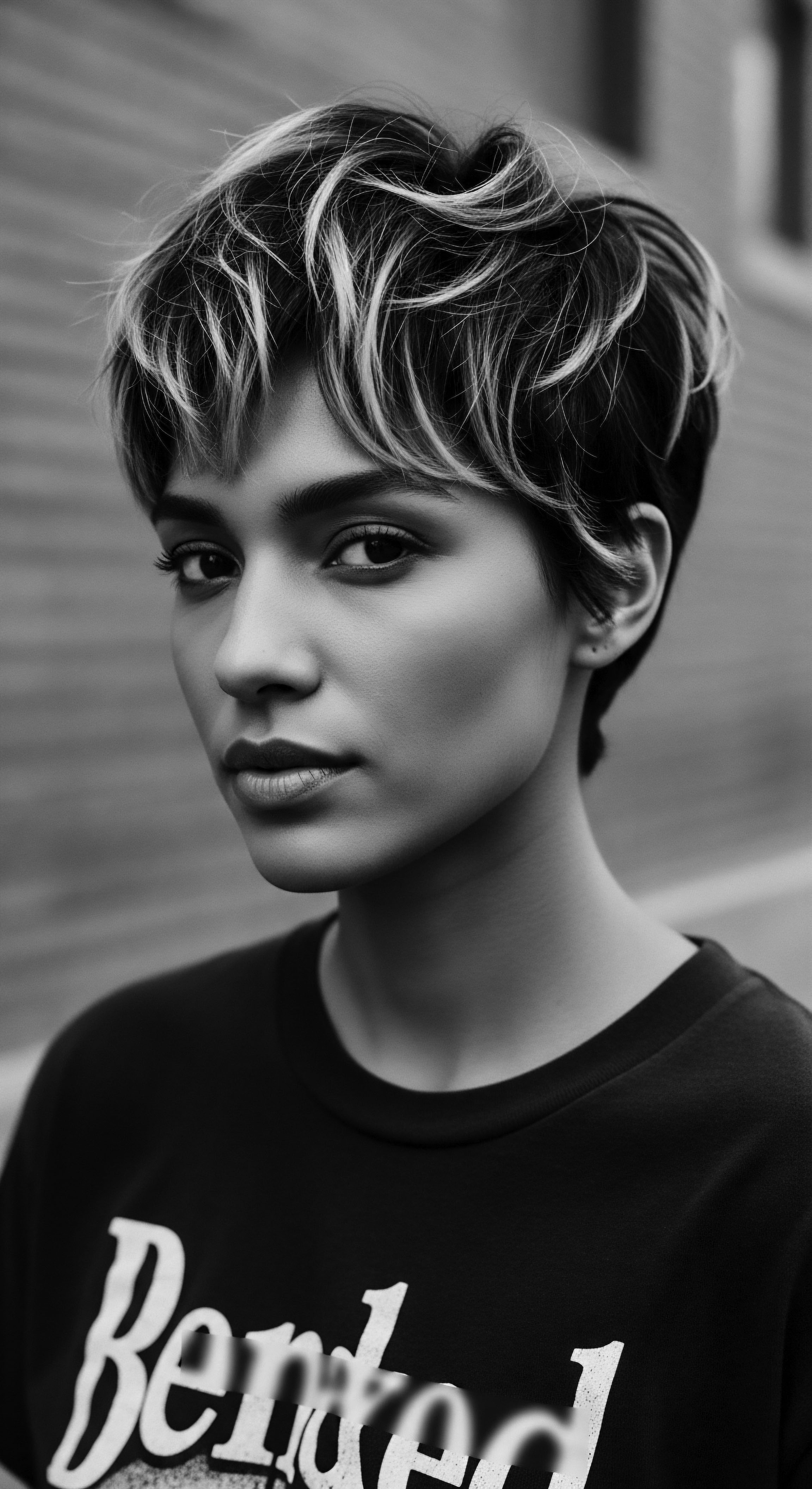
Ritual
The hands that tend to textured hair perform more than simple maintenance; they participate in an ancient ritual, a continuation of practices passed down through generations. From intricate braiding to ceremonial oiling, these traditions speak volumes about the socio-political currents that have both threatened and strengthened the art of textured hair styling. In every twist, every loc, every natural crown, there lies a story of resistance, adaptation, and profound cultural assertion.
The very act of styling textured hair became a political statement in many eras. During periods of enslavement and colonialism, dominant powers often enforced stringent grooming codes, demanding that Black individuals straighten or cover their hair to conform to Eurocentric ideals. This was not merely about aesthetics; it was a calculated socio-political strategy to strip individuals of their identity, sever their connection to their ancestral heritage, and reinforce their subjugated status. Yet, within these oppressive contexts, hair rituals often persisted in secret, becoming vital acts of defiance and community bonding.

Styles as Statements
How did styling choices become acts of socio-political defiance? Take the Afro, for instance. Its rise in the 1960s and 70s during the Civil Rights and Black Power Movements was a direct rejection of assimilationist beauty standards. It was a visible manifestation of racial pride, a declaration of ‘Black is beautiful,’ and a symbol of solidarity and self-acceptance.
The Afro was not just a hairstyle; it was a political banner, challenging societal norms and asserting a distinct Black identity in the public sphere (Mercer, 1994). This movement encouraged many to cast aside chemical relaxers, reconnecting with their natural hair texture as a powerful act of liberation.
Similarly, the journey of Dreadlocks has been deeply intertwined with socio-political shifts. Originating in various African, Indian, and aboriginal cultures, locs held spiritual or warrior significance. Their adoption by Rastafarians in Jamaica, a movement rooted in anti-colonial and liberation theology, transformed them into a global symbol of rebellion, spirituality, and non-conformity. The subsequent stigmatization and discrimination faced by individuals with locs in Western workplaces and schools were direct consequences of their socio-political associations, highlighting persistent biases against expressions of Black cultural heritage.
The very act of styling textured hair, whether through ancestral braids or defiant Afros, has consistently been a powerful medium for socio-political expression and cultural survival.

Tools of Tradition and Transformation
The tools associated with textured hair care also bear the imprint of socio-political forces. Consider the hot comb. While it offered a temporary straightening effect, its widespread use became entangled with the desire for social acceptance and economic mobility within a society that valued straight hair. Its adoption, often a painful ritual, speaks to the immense pressure placed on Black individuals to conform, a pressure that was socio-politically manufactured.
Conversely, traditional tools like the wooden comb or braiding needles, often crafted from natural materials, represent an unbroken lineage of ancestral practices. Their continued use in many communities today represents a conscious choice to honor heritage, eschewing tools born from oppressive ideals for those rooted in cultural authenticity.
| Historical/Ancestral Practices Braiding and Cornrows ❉ Ancient techniques for identity, status, communication, and hygiene. Often intricate, reflecting community lore. |
| Socio-Political Influence & Modern Relevance Survived enslavement as hidden maps to freedom and symbols of resilience. Reclaimed in modern movements for cultural pride and natural hair expression. |
| Historical/Ancestral Practices Hair Oiling/Butter Application ❉ Use of natural plant extracts (e.g. shea butter, coconut oil) for health, sheen, and scalp care across African traditions. |
| Socio-Political Influence & Modern Relevance Stigmatized as "unclean" during colonial periods, then commercialized without acknowledging traditional roots. Now revitalized as part of holistic wellness, reconnecting with ancestral ingredients. |
| Historical/Ancestral Practices Loc Formation ❉ Spiritual or cultural practice in various indigenous groups, signifying dedication, wisdom, or rebellion. |
| Socio-Political Influence & Modern Relevance Became a powerful symbol for Rastafarianism and Black liberation movements, facing workplace discrimination. Now increasingly accepted, reflecting evolving societal views on hair diversity. |
| Historical/Ancestral Practices These practices illuminate how the enduring heritage of textured hair care has navigated and often defied socio-political pressures, continuously adapting yet preserving its core. |
The re-emergence of “natural hair” as a widespread movement, gaining significant traction in the late 20th and 21st centuries, is a direct socio-political response. It is a collective decision to reject chemically altered hair, embracing intrinsic texture as a form of self-love and cultural pride. This movement, often spread through digital communities and grassroots organizing, challenges prevailing beauty norms and advocates for acceptance in all spheres of life, from corporate offices to school classrooms.
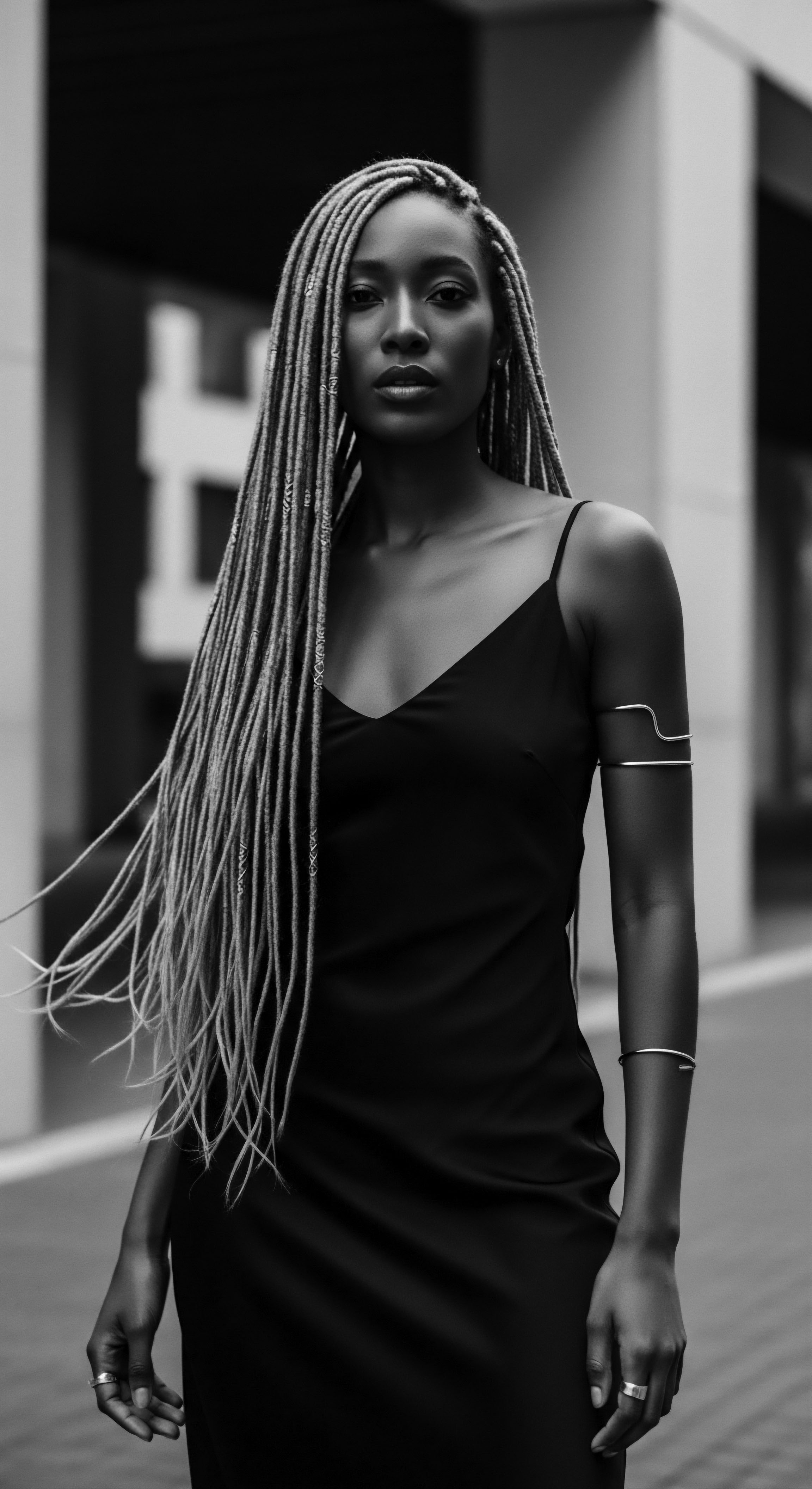
Relay
The journey of textured hair care, from the hands of our forebears to the rituals of today, is a profound relay—a continuous passing of ancestral wisdom through the ever-shifting currents of socio-political landscapes. How we care for textured hair, the ingredients we seek, and the problems we address are all deeply informed by the historical struggles and triumphs that have shaped perceptions of this unique aspect of our being.
For generations, the act of hair care was a communal ritual, a time for sharing stories, transferring knowledge, and reinforcing familial bonds. This communal aspect, however, faced severe challenges under oppressive systems that sought to isolate and dehumanize. Yet, even in the face of such adversity, these traditions persisted, often subtly, becoming acts of quiet resistance and cultural preservation. The wisdom of identifying beneficial herbs, crafting protective styles, or understanding the scalp’s rhythms was passed down, strand by precious strand.

Wellness Rooted in Resilience
Can ancestral wisdom guide modern textured hair regimens? Absolutely. The forced assimilation and the subsequent rise of harsh chemical straighteners profoundly impacted the health of Black hair. The socio-political pressure to conform led to widespread chemical damage, a direct consequence of a beauty standard alien to textured hair’s nature.
This period highlights how external socio-political forces directly influenced individual health practices, often to the detriment of wellbeing. The modern wellness movement for textured hair is, in many ways, a conscious healing, a return to the holistic principles of our ancestors.
Consider the concept of “protective styling,” a tradition deeply embedded in African hair heritage. Styles like braids, twists, and cornrows, by minimizing manipulation and exposure to environmental elements, historically served to maintain hair health and growth (Byrd & Tharps, 2001). In contemporary society, this heritage practice stands as a counter-narrative to commercial pressures that often advocate for excessive heat and chemical processing, which can be damaging. The resurgence of protective styling is a testament to the enduring practicality and wisdom of ancestral approaches, now embraced for both their protective qualities and their aesthetic value.
The shift towards holistic textured hair care represents a powerful reclaiming of ancestral wisdom, transforming daily rituals into acts of healing and self-affirmation amidst historical socio-political pressures.
The products used for textured hair care also tell a socio-political story. For decades, the market was dominated by products designed for straight hair or harsh chemical relaxers. The absence of suitable, nourishing products for textured hair was not an oversight; it was a reflection of societal biases that neglected the needs of Black consumers and perpetuated the idea that natural textured hair was problematic. The rise of Black-owned beauty brands and the mainstreaming of natural ingredients for textured hair are direct responses to this historical neglect, representing a powerful economic and cultural shift.

Nighttime Sanctuaries and Bonnet Wisdom
The seemingly simple act of donning a bonnet or silk scarf before bed carries a rich socio-political history and deep heritage. Historically, headwraps and coverings in African and diasporic cultures served various purposes ❉ protection from the elements, spiritual significance, or markers of status. During periods of enslavement and Jim Crow, head coverings often became a necessity, sometimes imposed as a sign of subjugation, other times adopted as a means of modesty, protection, and maintaining hair between arduous tasks. Yet, within these constraints, the practice evolved to protect delicate styles and maintain moisture, quietly preserving hair health against harsh realities.
Today, the satin bonnet is a ubiquitous symbol of textured hair care, its practical benefits—reduced friction, moisture retention, preservation of style—rooted in centuries of lived experience. It embodies a practical wisdom, a cultural continuity that speaks to the ingenuity of adapting ancestral knowledge to modern life. Its widespread adoption is a quiet triumph, a collective recognition of the specific needs of textured hair and a departure from a past where such considerations were often dismissed or ignored.
Our approach to problem-solving in textured hair care—from addressing dryness to managing breakage—is also colored by these historical socio-political contexts. For too long, solutions were sought through assimilation, masking issues with temporary fixes that often exacerbated underlying problems. The current movement towards understanding textured hair’s unique structure and embracing tailored, nourishing routines is a profound step forward, a direct result of increased self-acceptance and a collective pursuit of genuine hair health.
- The Black Is Beautiful Movement (1960s-1970s) ❉ This socio-political movement directly challenged Eurocentric beauty standards by promoting the acceptance and celebration of natural Black features, including textured hair. It led to a significant increase in the popularity of the Afro and a decline in chemical relaxer use.
- CROWN Act (Creating a Respectful and Open World for Natural Hair) ❉ A legislative movement in the 21st century to prohibit discrimination based on hair texture and protective hairstyles associated with race. This act directly addresses the socio-political discrimination faced by individuals with textured hair in workplaces and schools.
- Diaspora Hair Traditions ❉ The resilience of hair practices, carried by African people across the diaspora despite attempts at cultural eradication, speaks to a powerful, unspoken socio-political resistance and the enduring strength of heritage.
The deep connection between holistic wellbeing and hair health is not a new concept; it is an ancestral one. Many African traditions saw the body as interconnected, where spiritual, mental, and physical health were interwoven. Hair, often considered a conduit to the spiritual realm or a symbol of life force, was cared for with a reverence that acknowledged its place within this holistic framework. The contemporary emphasis on mindful hair care, using natural ingredients, and practicing self-care rituals is a powerful echo of these ancient philosophies, a relay of wisdom across generations, profoundly shaped by the socio-political battles fought for the right to simply be.

Reflection
The story of textured hair is, at its heart, a saga of resilience, a living narrative woven through the very fabric of socio-political change. Each curl, each coil, each loc stands as a testament to journeys undertaken, battles waged, and identities reclaimed. From the initial colonial gaze that sought to diminish its natural splendor to the resounding cries of self-acceptance echoing across continents today, textured hair has served as both a canvas and a catalyst for profound societal shifts. It reminds us that beauty is not monolithic, but a vibrant spectrum, continually redefined by those who dared to wear their heritage with unapologetic pride.
The legacy embedded within textured hair is not a static relic of the past; it is a living, breathing archive, constantly being written by hands that moisturize, style, and affirm its inherent worth. It is a story of ancestral wisdom, passed down through whispers and practices, validated by the very movements that championed human dignity. As we continue to navigate a world that still grapples with definitions of beauty and belonging, the unwavering spirit of textured hair remains a beacon, inviting us to honor its heritage, celebrate its diversity, and recognize the profound strength that lies within every strand.
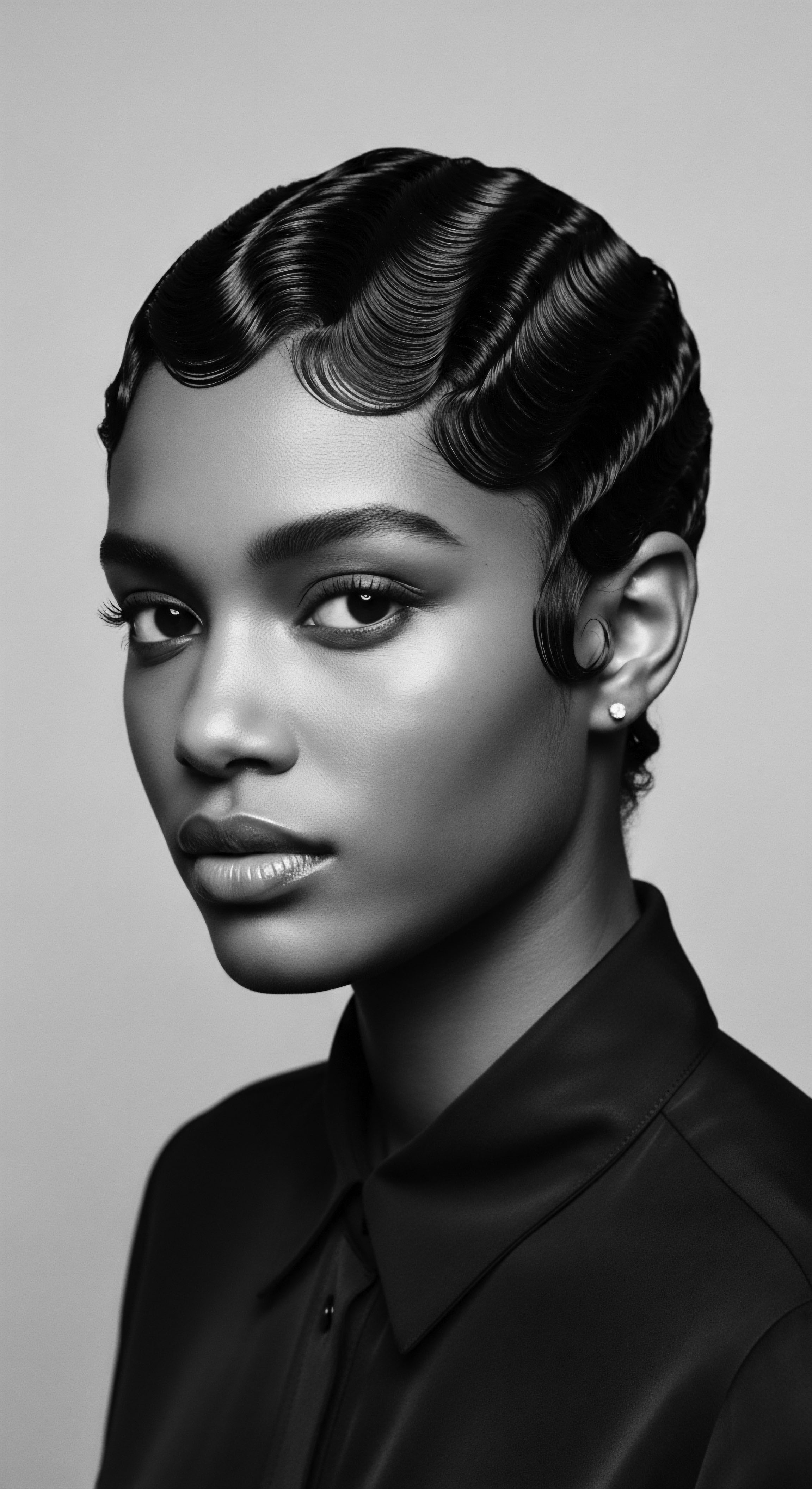
References
- Byrd, Ayana D. and Tharps, Lori L. Hair Story Untangling the Roots of Black Hair in America. St. Martin’s Press, 2001.
- Mercer, Kobena. Welcome to the Jungle New Positions in Black Cultural Studies. Routledge, 1994.
- Roberts, Dorothy. Fatal Invention How Science Politics and Big Business Re-Create Race in the Twenty-first Century. New Press, 2011.
- Walker, A’Lelia Bundles. On Her Own Ground The Life and Times of Madam C.J. Walker. Lisa Drew Books/Scribner, 2001.
- White, Shane. Stylin’ African American Expressive Culture from Its Beginnings to the Zoot Suit. Cornell University Press, 1998.
- Craig, Maxine Leeds. Ain’t I a Beauty Queen Black Women Beauty and the Politics of Race. Oxford University Press, 2002.
